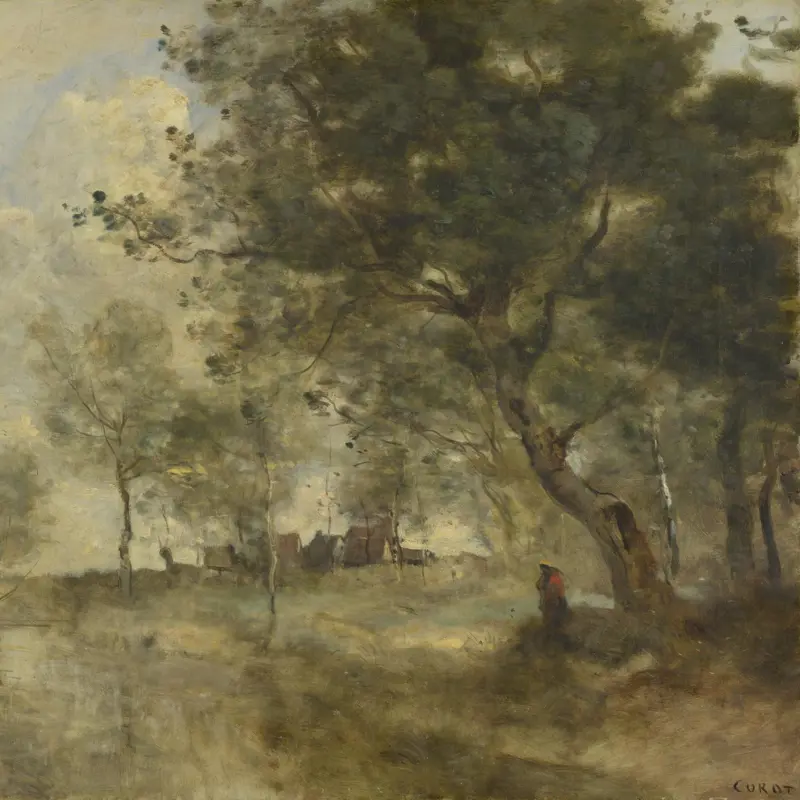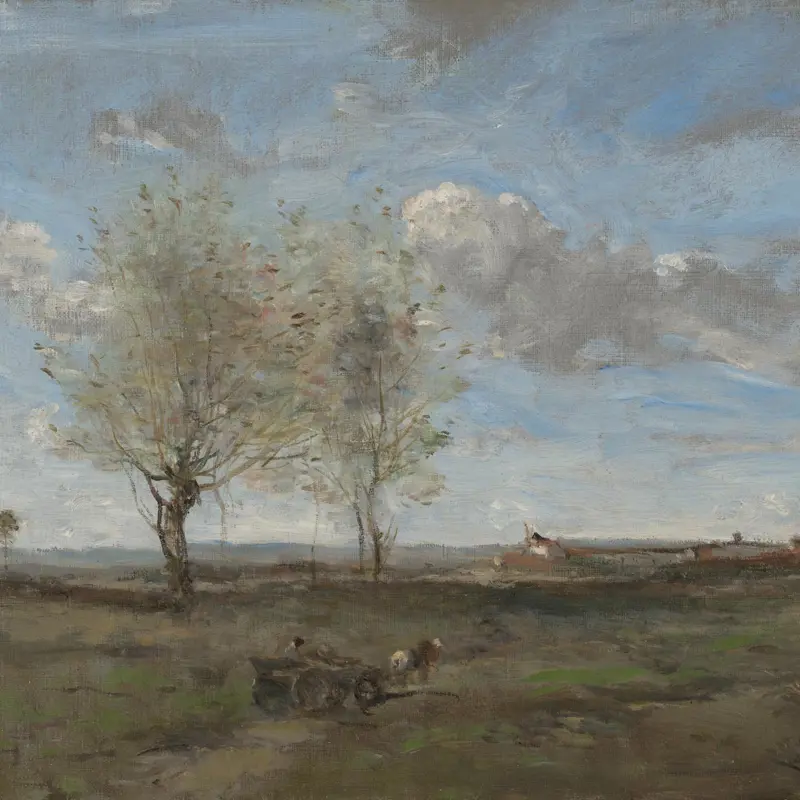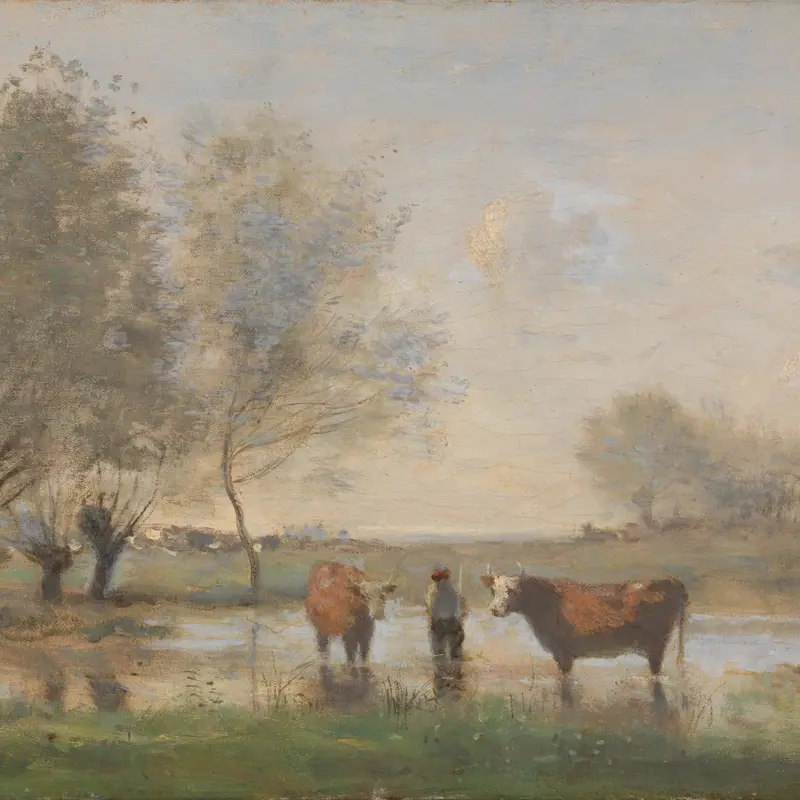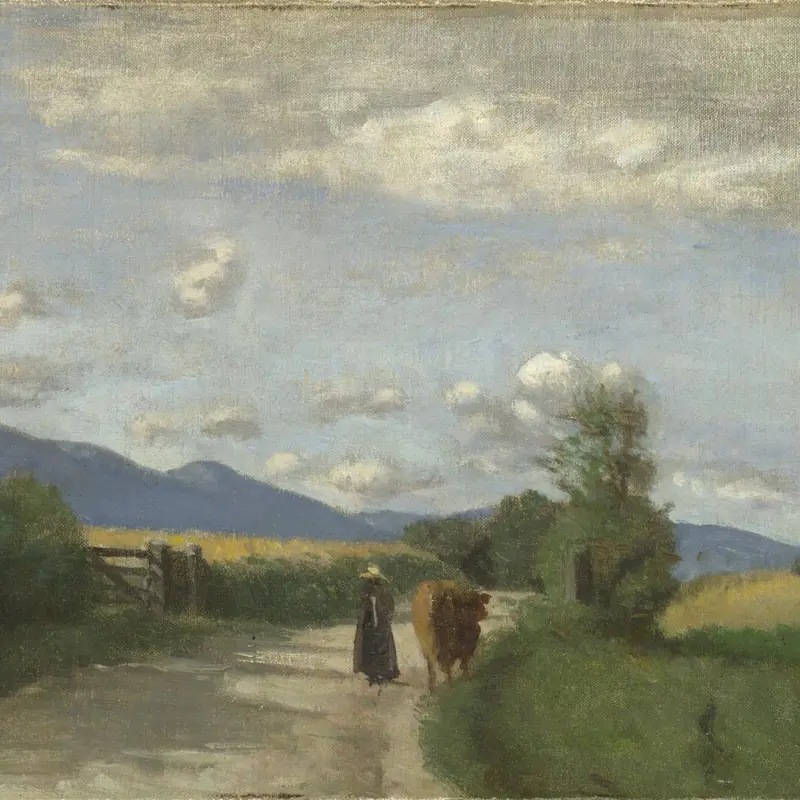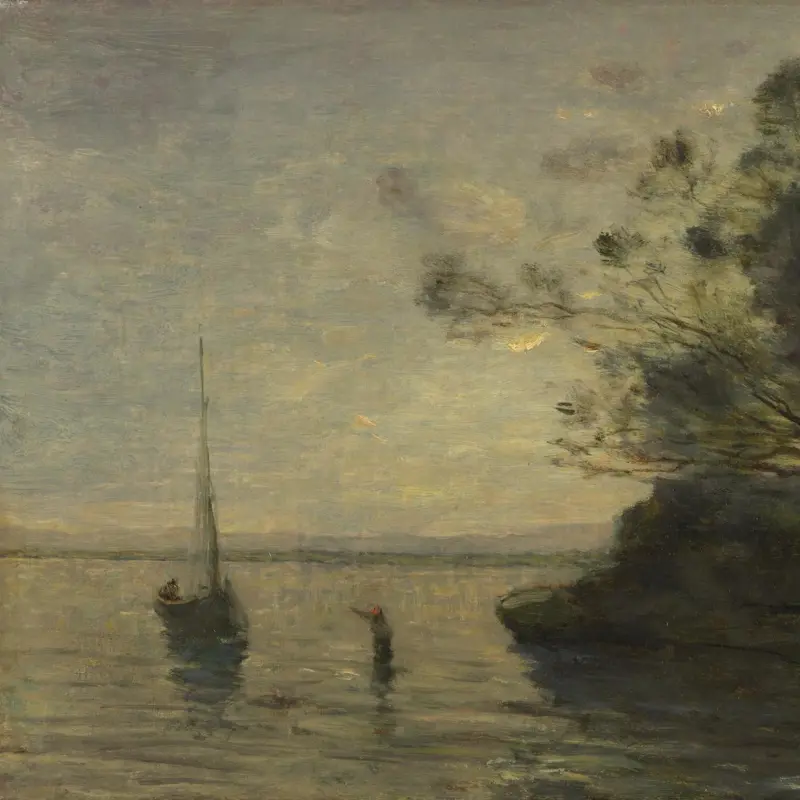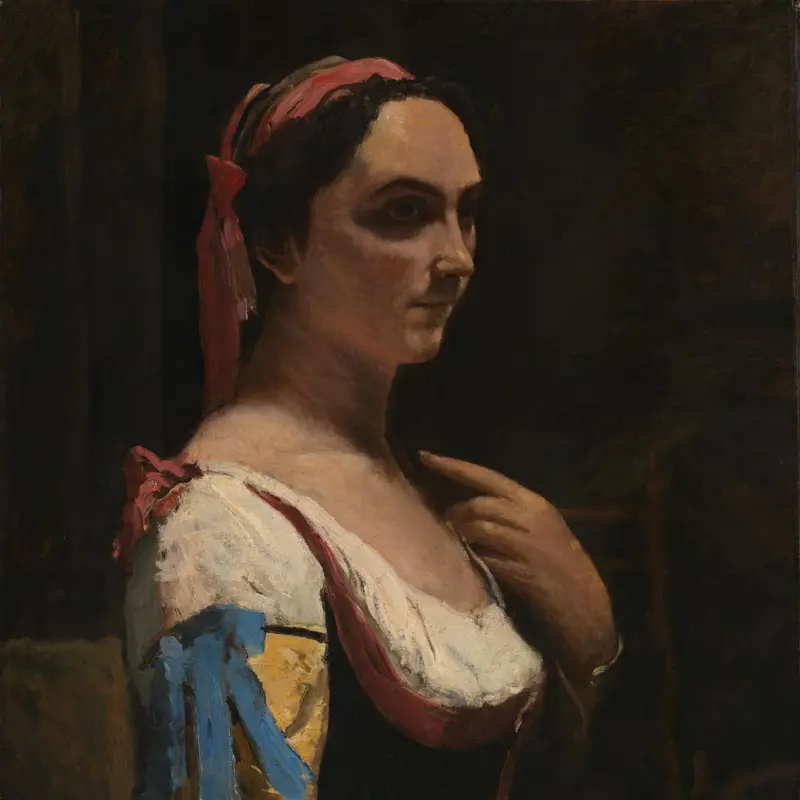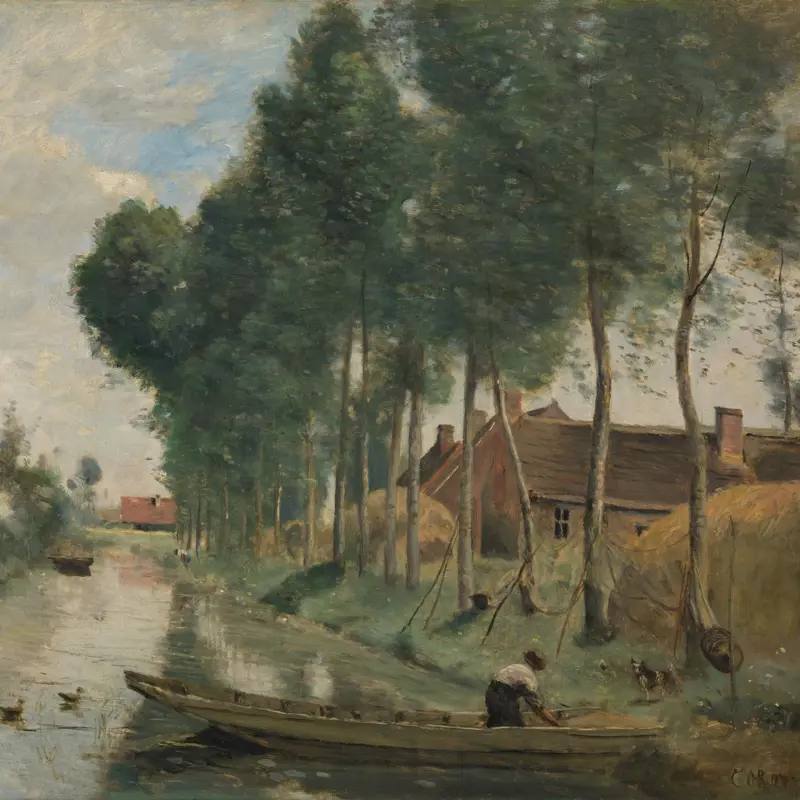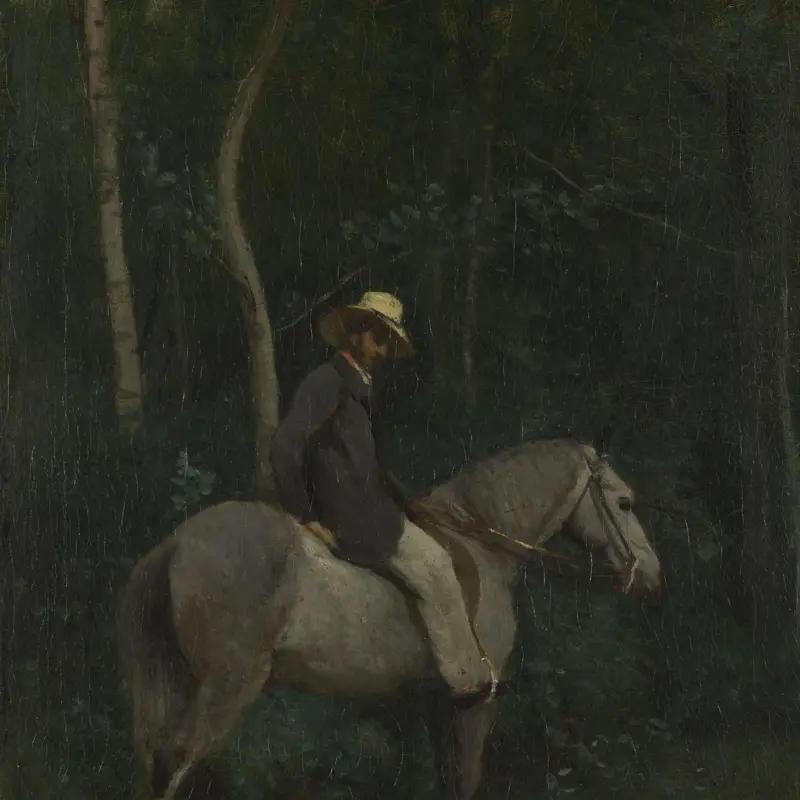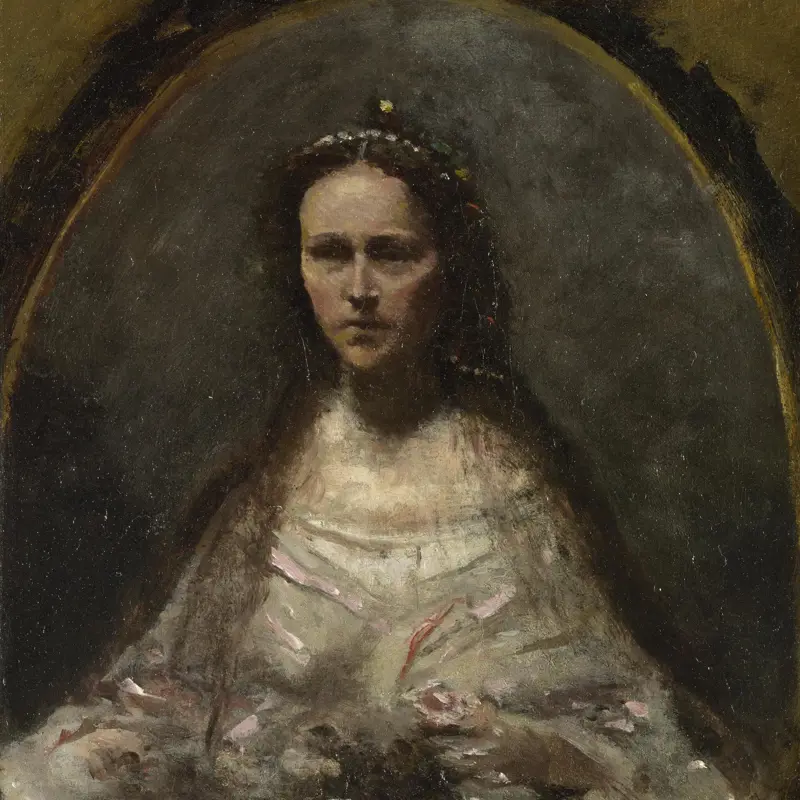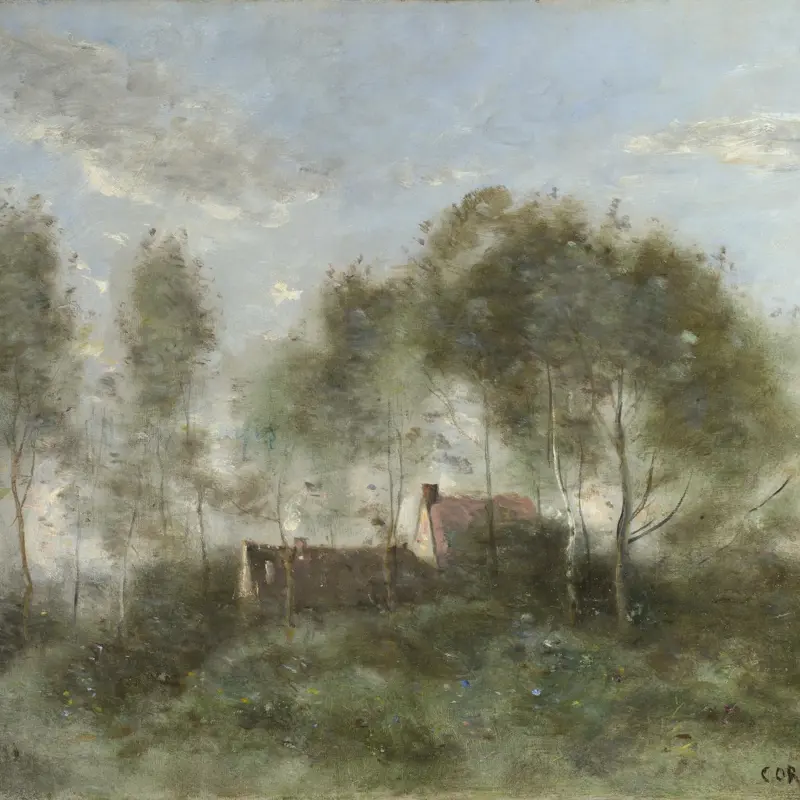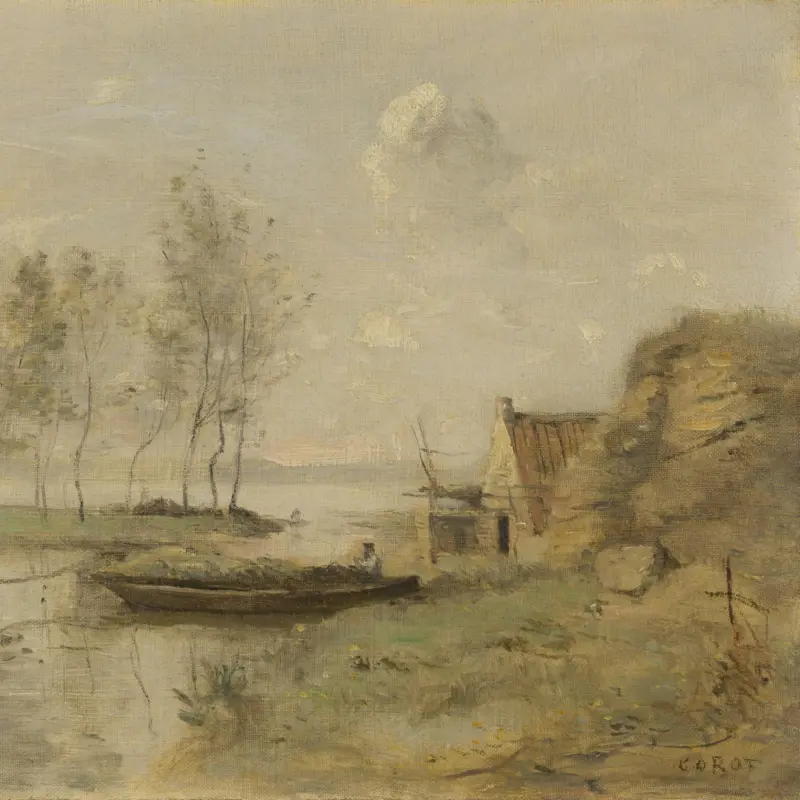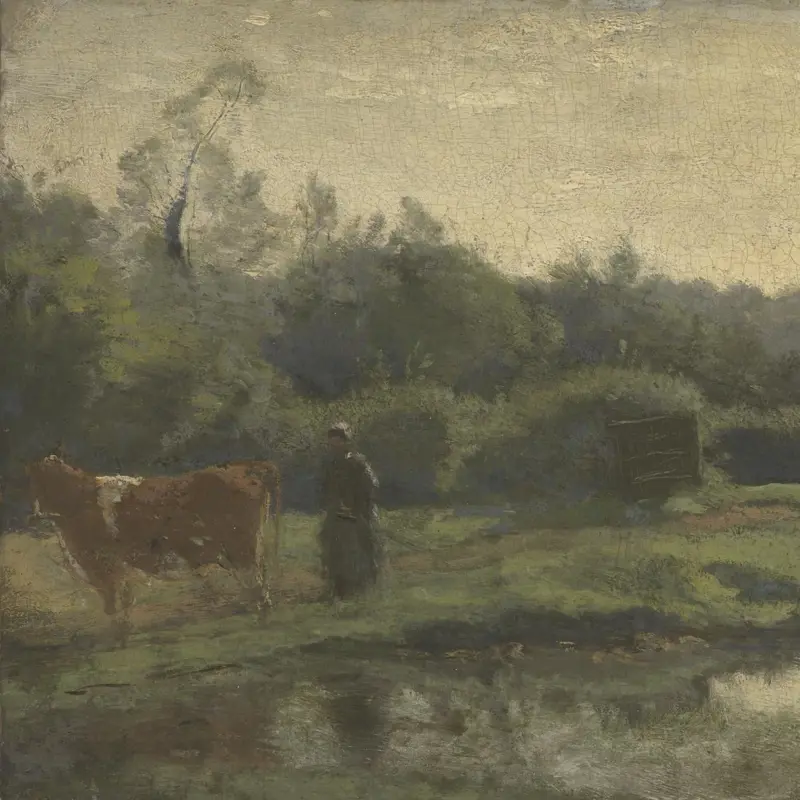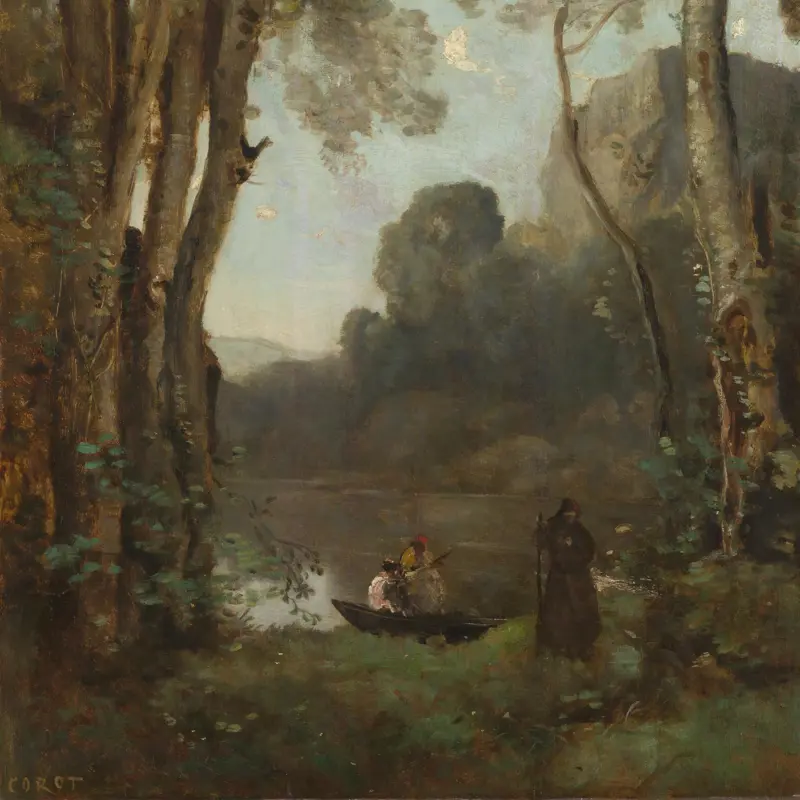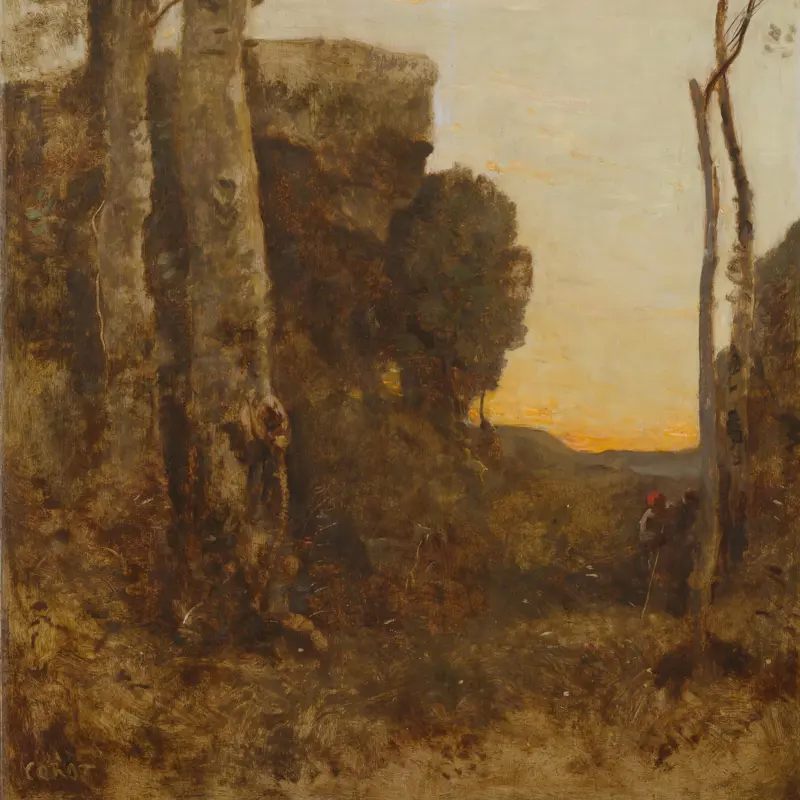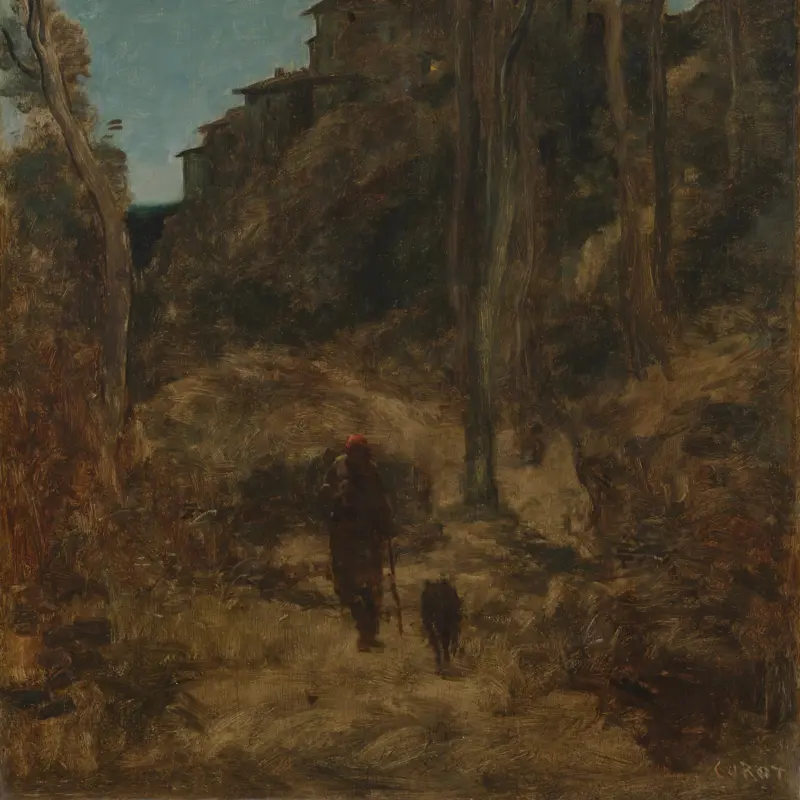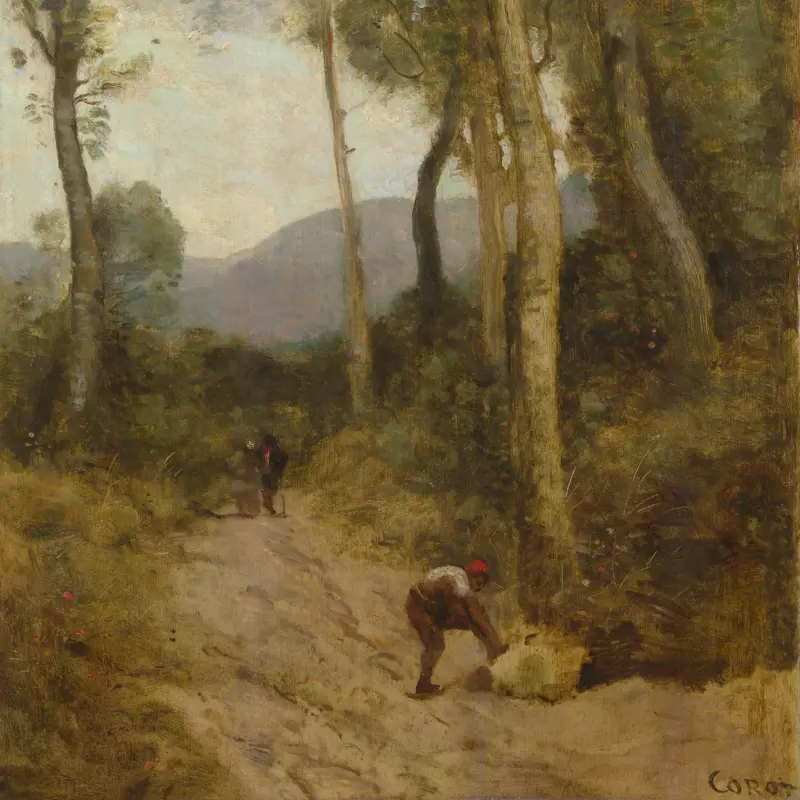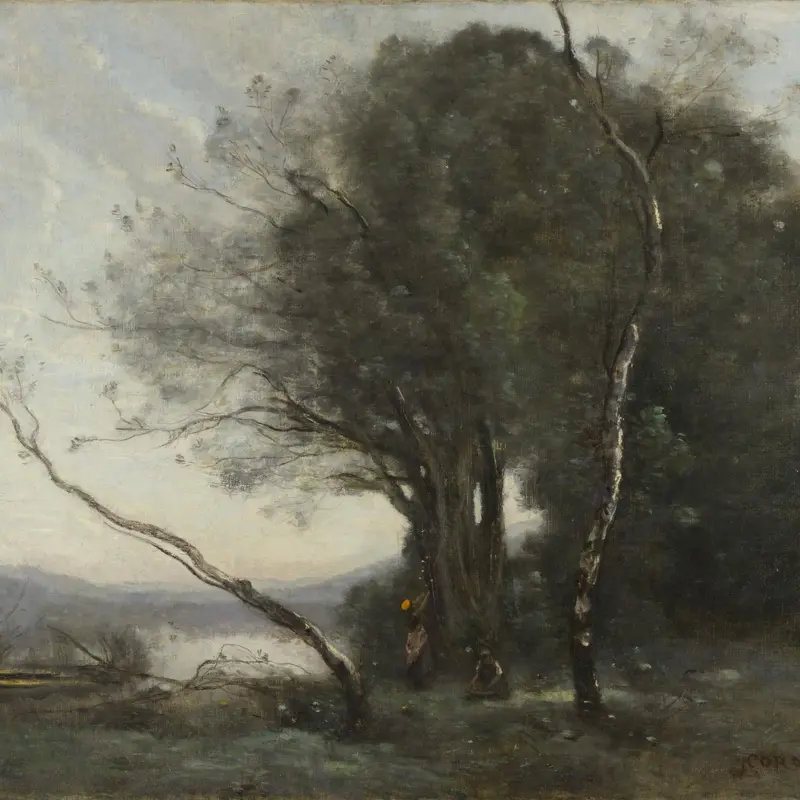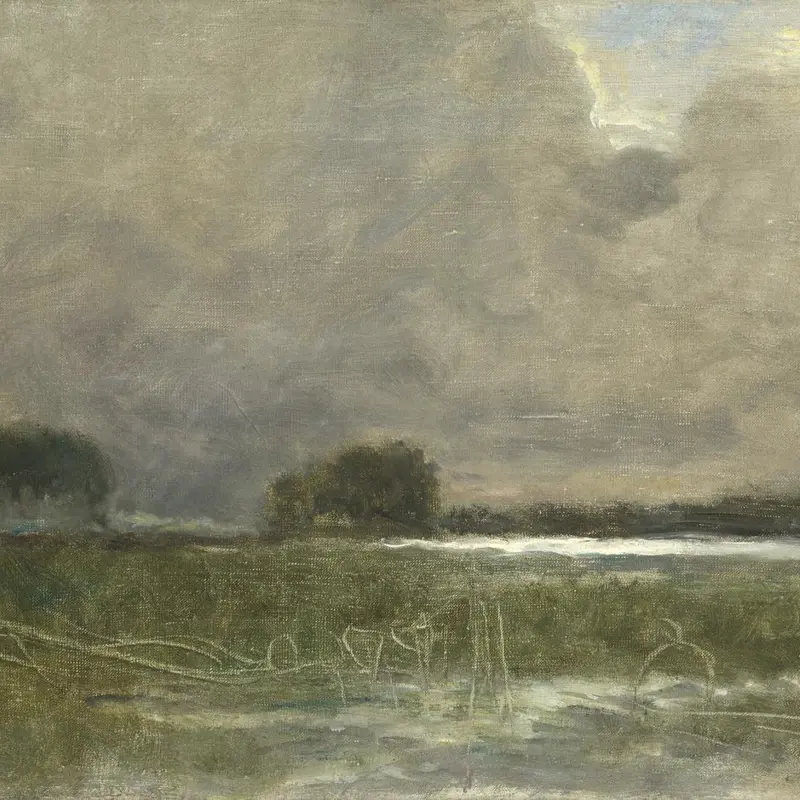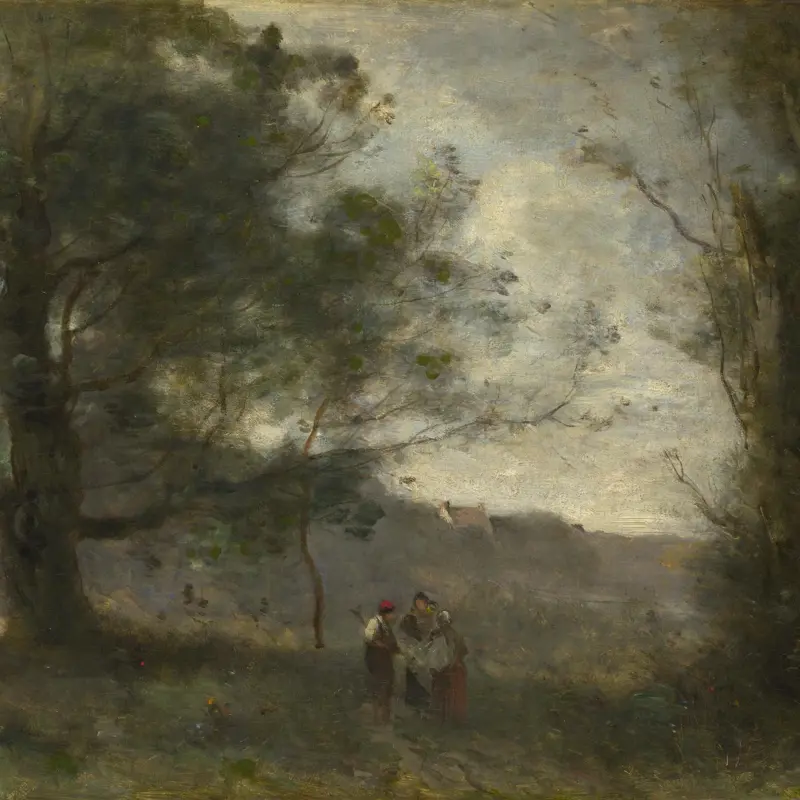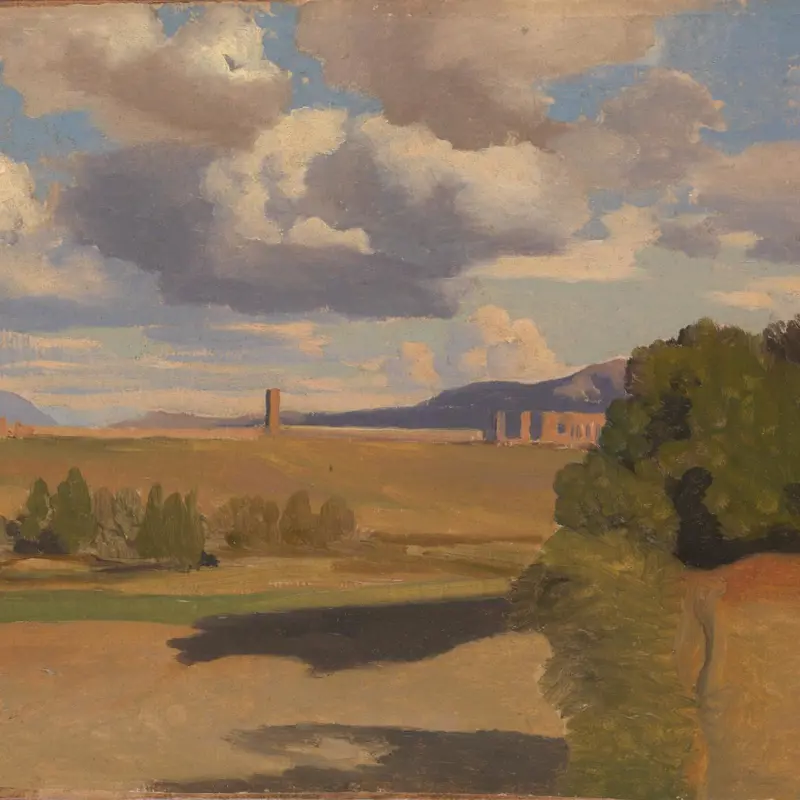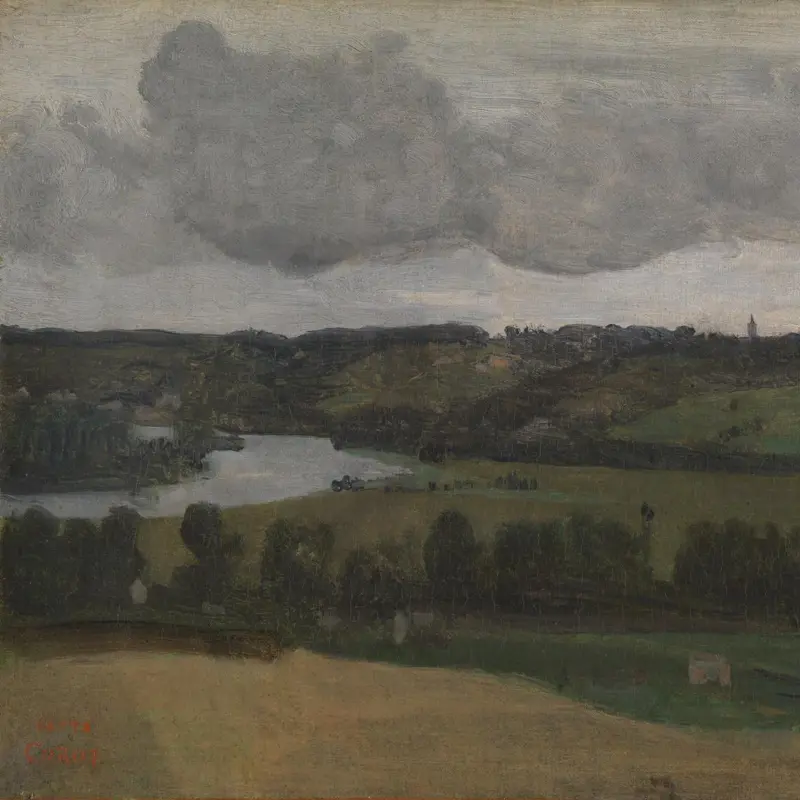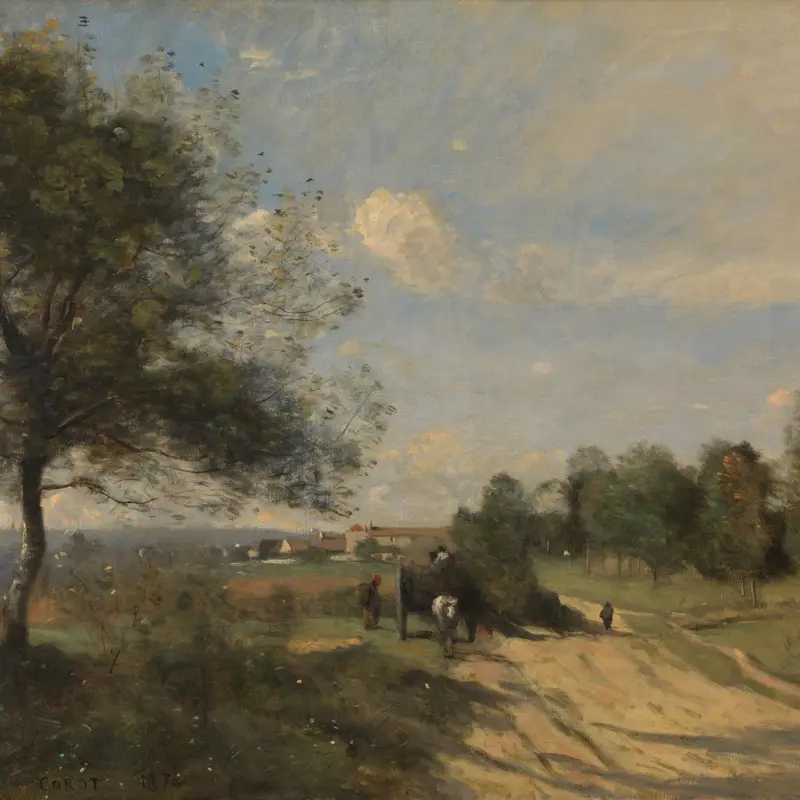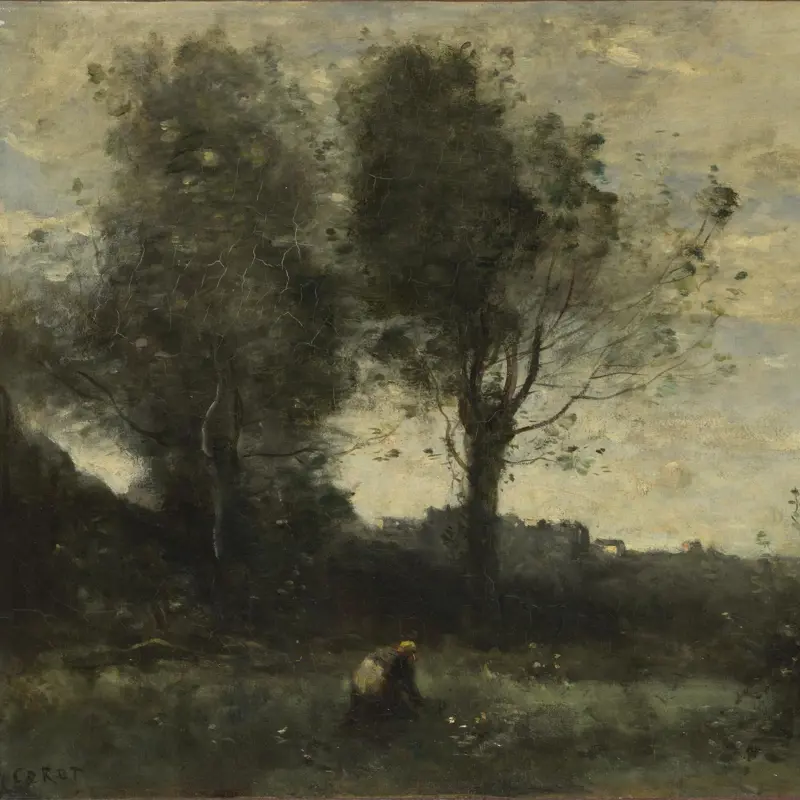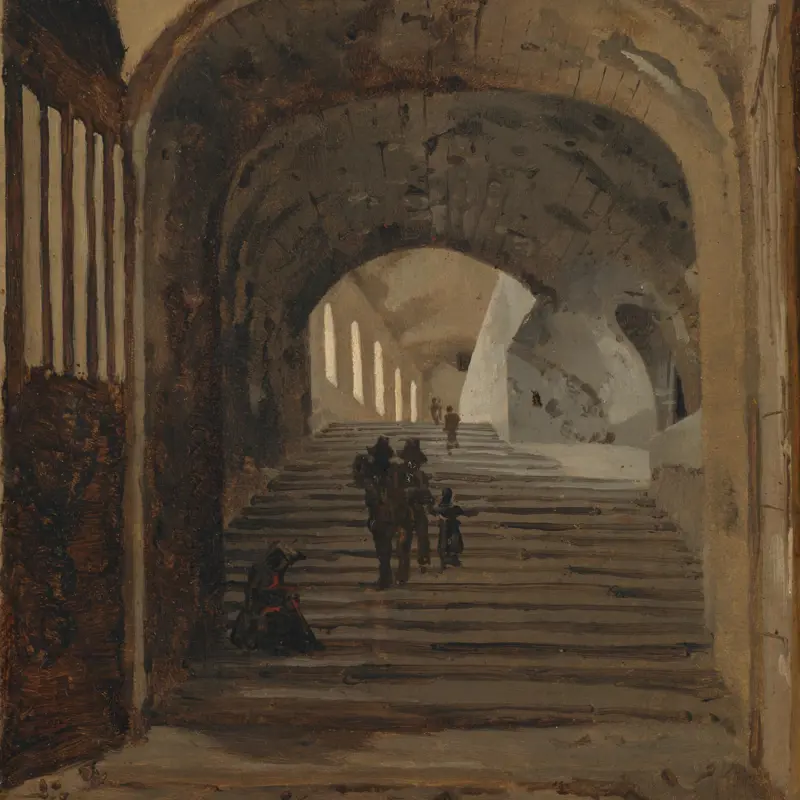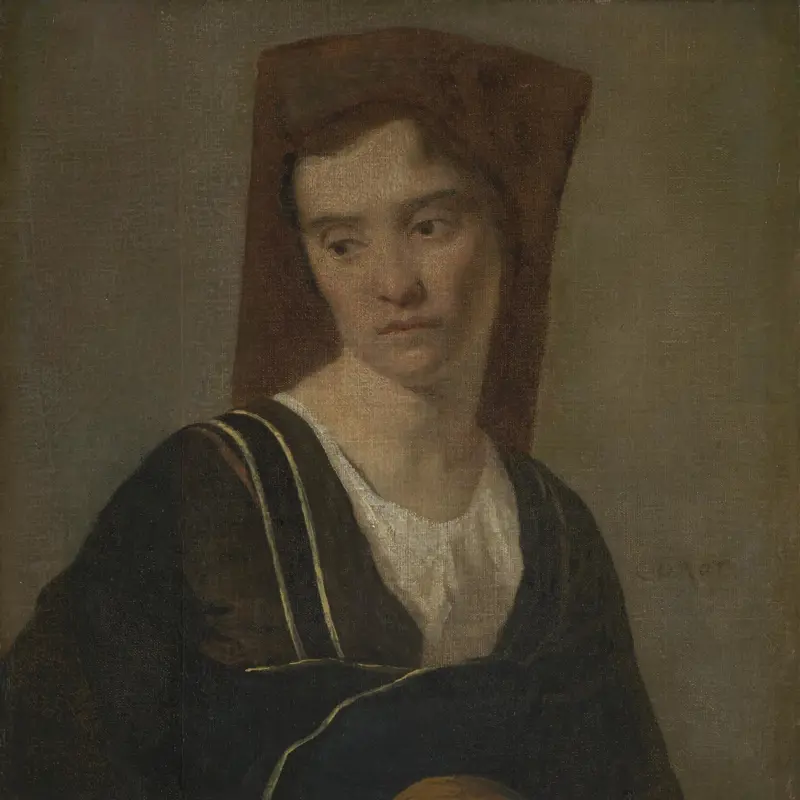Jean-Baptiste-Camille Corot, 'Avignon from the West', 1836
About the work
Overview
This panoramic view of the medieval city of Avignon in the south of France most likely dates from a visit Corot made in July 1836. We are looking at Avignon from the small town of Villeneuve-lès-Avignon, on the opposite side of the Rhône.
The luminosity of this oil study is similar to outdoor oil sketches Corot made during his first visit to Italy from 1825 to 1828. As in those sketches, Corot uses horizontal bands of light and dark tones and blocks of carefully modulated colour, which he places next to each other. It is possible to identify a number of the landmarks in Avignon, including the Papal Palace in the centre of the picture, as well as the remains of the famous bridge on the left. However, Corot is more interested in the overall effect of the composition as a harmoniously balanced arrangement of colours and tones.
Key facts
Details
- Full title
- Avignon from the West
- Artist
- Jean-Baptiste-Camille Corot
- Artist dates
- 1796 - 1875
- Date made
- 1836
- Medium and support
- oil on canvas
- Dimensions
- 34 × 73.2 cm
- Inscription summary
- Signed
- Acquisition credit
- Sir Hugh Lane Bequest, 1917, The National Gallery, London. In partnership with Hugh Lane Gallery, Dublin.
- Inventory number
- NG3237
- Location
- Not on display
- Collection
- Main Collection
- Frame
- 18th-century Italian Frame
Provenance
Additional information
Text extracted from the ‘Provenance’ section of the catalogue entry in Sarah Herring, ‘National Gallery Catalogues: The Nineteenth Century French Paintings’, vol. 1, ‘The Barbizon School’, London 2019; for further information, see the full catalogue entry.
Exhibition history
-
2009Corot to Monet: A Fresh Look at Landscape from the CollectionThe National Gallery (London)8 July 2009 - 20 September 2009
-
2009Corot e l'arte moderna: Souvenirs et impressionsPalazzo della Gran Guardia27 November 2009 - 7 March 2010
-
2013Through European Eyes: The Landscape Oil SketchThe National Gallery (London)6 February 2013 - 28 April 2013
-
2014Artistic Exchanges: Corot, Costa, LeightonThe National Gallery (London)7 May 2014 - 3 September 2014
-
2019Long Loan to The Hugh Lane (2019 - 2026) (Group B)Dublin City Gallery The Hugh Lane20 October 2019 - 23 February 2026
-
2020Masterpieces from the National Gallery, LondonThe National Museum of Western Art18 June 2020 - 18 October 2020The National Museum of Art3 November 2020 - 31 January 2021
-
2021Botticelli to Van Gogh: Masterpieces from the National Gallery, LondonNational Gallery of Australia5 March 2021 - 14 June 2021
-
2021The Director's Choice: Lizards, Fancy Feathered Hats and TrickeryThe National Gallery (London)5 May 2021 - 9999
Bibliography
-
1896Royal Academy of Arts, Exhibition of the Works of the Old Masters (exh. cat. Royal Academy of Arts, 1896), London 1896
-
1905A. Robaut, L'oeuvre de Corot: Catalogue raisonné et illustré, Paris 1905
-
1906
H. Lane, First Exhibition: Modern Paintings in Municipal Art Gallery, Belfast, n.p. 1906
-
1908'The Dublin Gallery of Modern Art', The Burlington Magazine, XII/59, 1908, pp. 277-82
-
1917C. Phillips, 'National Gallery, II: Sir Hugh Lane's Pictures', Daily Telegraph, 1917
-
1930J. Meier-Graefe, Corot, Berlin 1930
-
1932T. Bodkin, Hugh Lane and his Pictures, Dublin 1932
-
1941L. Venturi, Peintres modernes: Goya, Constable, David, Ingres, Delacroix, Corot, Daumier, Courbet, Paris 1941
-
1943R. Escholier, La peinture française: XIXe siècle, Paris 1943
-
1957Martin Davies, National Gallery Catalogues: French School, 2nd edn (revised), London 1957
-
1970Davies, Martin, and Cecil Gould, National Gallery Catalogues: French School: Early 19th Century, Impressionists, Post-Impressionists etc., London 1970
-
1975M.-P. Fouchet, Corot, Paris 1975
-
1979J. Leymarie, Corot, new edn, Geneva 1979
-
1983M. Wilson, French Painting after 1800, London 1983
-
1988J. Selz, La vie et l'oeuvre de Camille Corot, Paris 1988
-
1996
G. Tinterow, M. Pantazzi, V. Pomarède, Corot (exh. cat., Galeries Nationales du Grand Palais, Paris; National Gallery of Canada, Ottawa; Metropolitan Museum of Art, New York), New York 1996
-
1996
F. Leeman and H. Pennock, Museum Mesdag: Catalogue of Paintings and Drawings, ed. L. van Tilborgh, trans. A. McCormick, Amsterdam and Zwolle 1996
-
1999A. Burmester et al. (eds), Barbizon: Malerei der Natur - Natur der Malerei, Munich 1999
-
2001
C. Baker and T. Henry, The National Gallery: Complete Illustrated Catalogue, London 2001
-
2001S. Herring, 'The National Gallery and the Collecting of Barbizon Paintings in the Early Twentieth Century', Journal of the History of Collections, XIII/1, 2001, pp. 77-89
-
2004K. Monrad et al., Turner and Romantic Nature (exh. cat., Statens Museum for Kunst, Copenhagen), ed. Sven Bjerkhof, Copenhagen 2004
-
2005V. Pomarède et al., Corot: Naturaleza, emoción, recuerdo (exh. cat. Museo Nacional Thyssen-Bornemisza, 27 June - 11 September 2005), Madrid 2005
-
2019Herring, Sarah, National Gallery Catalogues: The Nineteenth Century French Paintings, 1, The Barbizon School, London 2019
Frame
Originating from the Liguria region near Genoa, this eighteenth-century Italian frame features simple reverse architectural moulding. Crafted from silver gilt, the frame is covered with a gold-tinted lacquer using a technique called meccatura. This imparts a warm, golden hue to the silver beneath. As the lacquer ages, a natural oxidation process results in tarnished black lines and spots, enriching the frame with a distinctive patina and character.
In 1965–6 the frame with its muted gold tones was chosen to harmonise with the colours of Corot’s Avignon from the West and was adapted to fit its dimensions.
About this record
If you know more about this work or have spotted an error, please contact us. Please note that exhibition histories are listed from 2009 onwards. Bibliographies may not be complete; more comprehensive information is available in the National Gallery Library.

